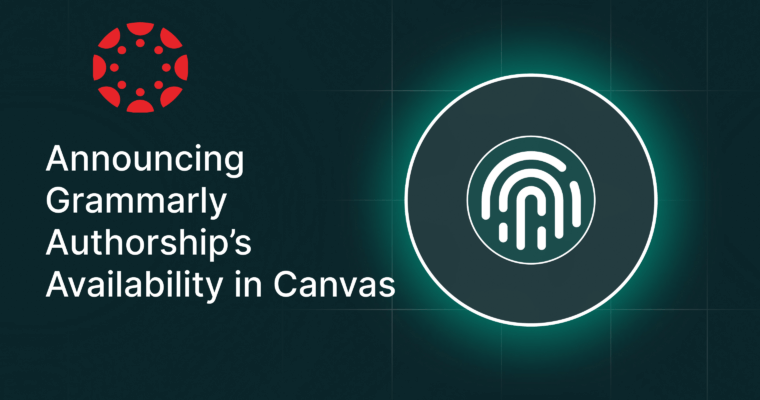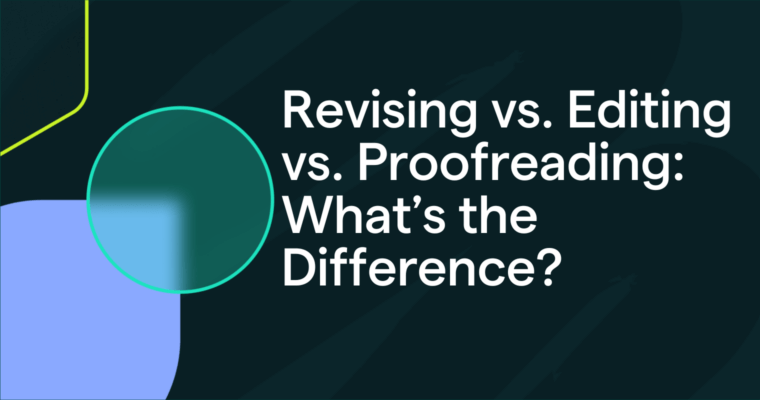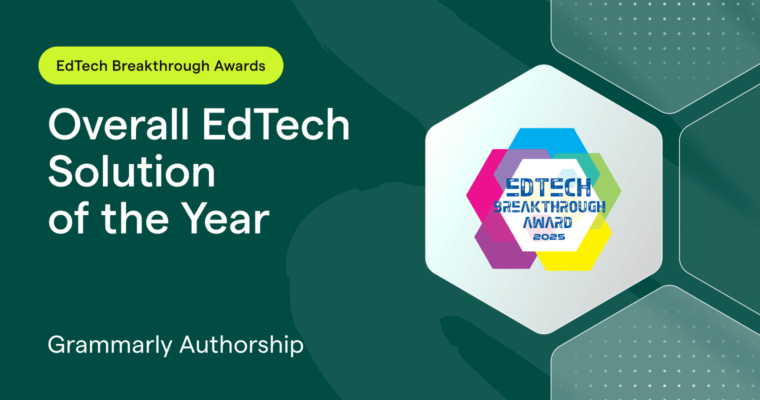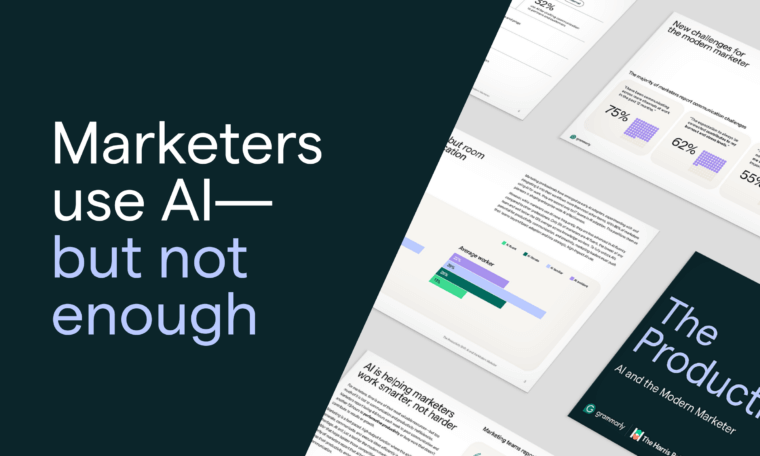
As AI advances, colleges and universities must rethink how they assess student work while maintaining academic integrity. At the University of Florida, Professor and Associate Provost Dr. Brian Harfe observed that traditional writing assignments in his large-enrollment general education course were becoming increasingly vulnerable to AI-generated responses. Instead of resisting the technology, he explored how it could be incorporated into coursework in a way that supported student learning. Grammarly’s Authorship functionality became a key part of his personal approach, promoting transparency in student writing while encouraging students to engage critically with AI.
The challenge: Assessing the traditional writing assignment in the era of AI
Dr. Harfe observed a growing challenge in his course: the rapid development of AI tools posed new difficulties for assessing student understanding. Standard essay tasks were at risk because AI could produce content that mimicked student responses, making it harder to assess comprehension and critical thinking accurately.
In response, Dr. Harfe redesigned his end-of-course assessment to include AI as part of the process. Rather than ban AI use, he asked students to generate an initial draft using AI. Students were then required to critique the AI’s output and revise it to reflect their own personal viewpoints and insights. This approach maintained the original student learning objectives while removing the need to police AI usage. It provided a compelling learning opportunity for students to explore the strengths and weaknesses of AI as a writing and thinking tool.
Initially, Dr. Harfe asked students to indicate which parts of their work were AI-generated versus personally authored using a manual color-coding system. However, this approach had limitations. It placed a burden on students and introduced the risk that some might inaccurately represent their own contributions. Dr. Harfe recognized the need for a more reliable and scalable solution.
The solution: Testing Grammarly Authorship in the classroom
When Dr. Harfe learned that Grammarly Authorship was coming to market, he saw an opportunity to build on his early experiments. Authorship could automate the process of distinguishing between AI-generated and student-written text, removing the friction of manual tracking while providing deeper insights into how students interact with AI-generated content. He decided to use Authorship in his course to test both its practical classroom application and its potential as a teaching tool.
Integrated workflow steps:
- Initial AI draft: Students began their assignments by prompting an AI tool to create an essay draft. This helped students structure their thinking and provided an opportunity to evaluate the alignment between the AI’s perspective and their own beliefs.
- Personal modification: Students revised the AI-generated draft to better reflect their own perspectives, adding critique, insight, and analysis. This encouraged students to move beyond the passive use of AI and engage in reflective editing.
- Automated text attribution: Authorship automatically categorized content as either AI-generated or human-written in real time. This eliminated the need for manual color coding and created a more accurate and objective record of authorship.
- Enhanced transparency: Authorship tracked how students used revision and paraphrasing tools and flagged any copy-pasted content from external sources, providing additional context around the student’s writing process.
- Real-time analytics and replay: The tool’s replay feature allowed Dr. Harfe to review the evolution of each submission—watching how students modified AI-generated text and added their own thinking. This created a more complete picture of the student’s learning journey.
Results: Reflections and observations
310 students successfully submitted final assignments using Authorship, providing a large sample of data and student behavior to review.
- Engagement: Broad participation demonstrated student willingness to use AI transparently when given the structure and tools to do so.
- Understanding: 90% of students reported that the Authorship data was easy to understand and interpret.
- Student Insights: 79% found the Authorship report and replay feature valuable in reflecting on their own writing process.
“It’s really important to show students what AI can be used for: the good, the bad, the ugly, and then let them make decisions on when and how they should use it in their future lives. Grammarly Authorship is a tool that facilitates that process for faculty in a more collaborative way with students.”
— Dr. Brian Harfe, Professor and Associate Provost, University of Florida
Lessons learned and future implications
Dr. Harfe’s approach offers a valuable example for other educators exploring how to integrate AI into teaching and assessment meaningfully. His use of Authorship was exploratory in nature, rooted in curiosity about student learning and transparency rather than tool promotion. The insights gained point to broader considerations for how institutions can adapt to a changing landscape.
Key Lessons:
- Adaptability: Teaching strategies must evolve alongside technology. Dr. Harfe’s assignment design embraced AI’s capabilities without sacrificing the course’s core learning objectives.
- Transparency and accountability: Authorship’s analytics and attribution helped reduce guesswork for students and instructors, allowing a more transparent assessment of student effort and engagement.
- Critical engagement and student agency: Structuring assignments to include AI-enabled drafting followed by student revision created space for reflective, critical engagement—giving students ownership over both process and product.
Conclusion
As AI tools continue to evolve, educators are seeking practical ways to adapt their teaching without compromising core values. Dr. Harfe’s course-level experimentation with Grammarly Authorship provides one such example. His focus remained on helping students understand how to use AI thoughtfully, transparently, and in ways that support their own learning.
Connect with Dr. Brian Harfe to learn more about his research.




